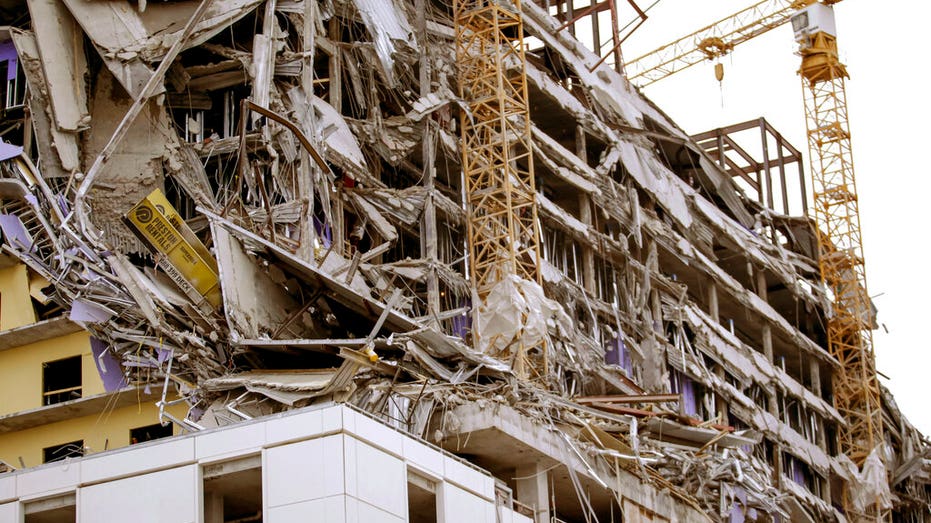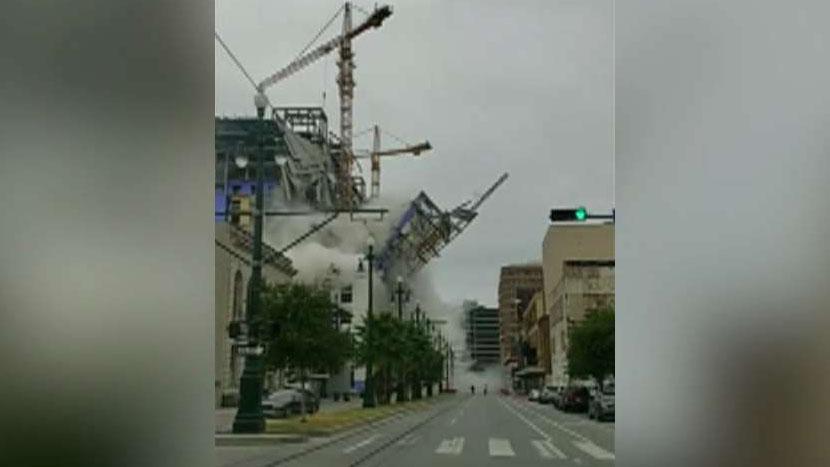New Orleans Hard Rock Hotel collapse: Lawsuit alleges negligence, cost-cutting
Ten people who said they were injured when the under-construction Hard Rock Hotel in New Orleans partially collapsed Sunday have filed a lawsuit alleging the project was doomed by cost-cutting and inadequate structural support.
Two people were killed and a third missing person is presumed dead after the top floors of the building collapsed during construction. Many others were injured, and the area around the future hotel remained evacuated Thursday as emergency workers were preparing to bring down a pair of unsecured cranes.
Getting construction started took several years as the developers faced a variety of issues, including a jail sentence for one developer who was sentenced to prison for overbilling a government program. The lawsuit names the developers, architect, engineers and builders as defendants, accusing them of negligence.
Attorneys Steve Herman and Rene Rocha, who are representing the victims, said in a statement, “The primary goal is to get to the bottom of exactly what happened, and make sure that nothing like this ever happens again.”
Citadel Builders, the company which was building the development and which was named in the lawsuit, said in a statement on its website that it was “shocked and saddened” by the deaths and “grateful” that most of the injured have returned home.
In a statement about the collapse, Citadel touted its safety record and pledged that safety would remain a priority.
While we don't yet know what caused the accident at the Hard Rock site, we would like our clients, friends, and the general public to rest assured that we are working with some of the finest engineering minds in the world and will get to the bottom of it," the company said.
The lawsuit alleges that the structure wasn’t designed to bear the loads it was intended to hold, that concrete wasn’t given enough time to cure and that unskilled and under-supervised labor was used.
“Delays, design changes and shortcuts created extra challenges to the project,” the lawsuit states.
The developers were supposed to submit pile load tests to city planners showing the piles could hold 125 tons. But they instead submitted tests from a different project that had been tested for 50 tons, according to the lawsuit.

Debris hangs on the side of the building after a large portion of a hotel under construction suddenly collapsed in New Orleans on Saturday, Oct. 12, 2019. Several construction workers had to run to safety as the Hard Rock Hotel, which has been under
The building also had an “insufficient” number of supports, the suit claims. Workers reported that decking materials and supports were too thin.
Even before the collapse, “dips” appeared in concrete decking on the upper floors, according to the lawsuit. That would indicate the concrete hadn’t cured, the building was not secure or both. Workers also noticed support beams bowing and failing, but construction continued.
“This major building collapse would not have occurred, but for the negligence and failures of the defendants,” the lawsuit alleges.




















